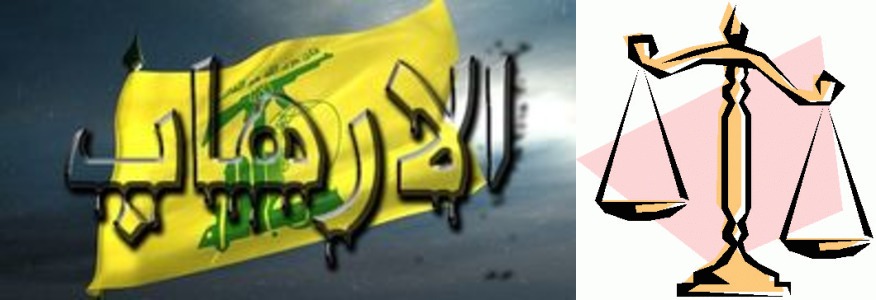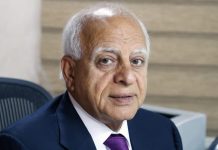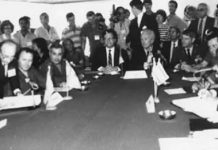Explained/Why Saudi Arabia and ‘Little Sparta’ Still Can’t Defeat Iran in Yemen
من الهآررتس: لماذا السعودية واسبارتا الصغير (الإمارات) غير قادرين حتى الآن على هزيمة إيران في اليمن
Alexander Griffing/Haaretz/July 18/18
The kingdom and the UAE are both modern military powerhouses, spending billions on arms every year, yet are being thwarted by a group of guerrilla fighters.
In the annual U.S. News & World Report “Power Rankings” that came out last week, Saudi Arabia and the United Arab Emirates were ranked the ninth and 10th most powerful countries in the world, respectively. Yet these two military powers are currently embroiled in the fourth year of conflict in one of the world’s poorest countries, Yemen, against Iran-backed rebels whom they just can’t seem to defeat.
The Saudi and UAE militaries are two of the best funded and equipped in the world. According to the Stockholm International Peace Research Institute, Saudi Arabia even surpassed Russia in 2017 with the world’s third-largest military expenditure, totalling $69.4 billion. The think tank also ranked Saudi Arabia as the second-largest importer of weapons in both 2015 and 2016, noting that such imports have increased by over 200 percent in the past six years.
However, the limitations of the Saudi military are well-known. Despite its massive budget and arms purchases, it suffers from a lack of experience, a reliance on U.S. refueling and resupplying, and from a human capital issue.
“They haven’t fought a war since 1991,” says Dr. Yoel Guzansky, a senior researcher at Tel Aviv University’s Institute for National Security Studies, while on the other side the Houthi rebels have “decades of guerrilla-warfare experience and fighting on this terrain, which is difficult.”
The Arab coalition fighting in Yemen, led by Saudi Arabia and the UAE, has been forced into a stalemate in recent weeks following an attempt to take the key port city of Hodeidah from the Iran-backed Houthis. Iran, which is fighting various proxy wars in the Middle East, has been accused by both the U.S. and Saudi intelligence agencies of arming the Houthis with weapons and rockets, which are currently aimed at Saudi Arabia’s Jizan Economic City, where Saudi Aramco, answering a call from U.S. President Donald Trump to help stabilize the global oil market, is building a 400,000-barrel-per-day refinery that is expected to become fully operational in 2019.
Riyadh and Abu Dhabi had promised a swift campaign in what has now become one of the fiercest battles in the devastating conflict.
The coalition claims its goal is to cut off the Houthis’ main supply line and force the group to the negotiating table. However, little progress has been made since the campaign was launched on June 12, as the Red Sea city is heavily defended by land and sea mines. The United Nations fears the campaign could trigger even more widespread famine, since the port is a lifeline for an impoverished state where 8.4 million are believed to be on the verge of starvation.
Heavy lifting
Guzansky notes that in Yemen it is actually the UAE, and not the Saudis, doing the heavy lifting. The Saudis are primarily providing aerial support, he says, while the UAE has actual troops on the ground – albeit many of them mercenaries from countries like Sudan – constituting a fighting force to be reckoned with. The UAE has even “earned itself the nickname ‘Little Sparta,’” in the U.S. military, says Guzansky, citing current U.S. Defense Secretary and former U.S. Marines Gen. James Mattis as having “an admiration for what they’ve done – and what they can do.”
The UAE, like the Saudis, is extremely well equipped with the most advanced weapons systems, purchased with its enormous financial resources. The Stockholm research institute claims the UAE should be listed among the world’s top 15 military spenders, but notes that the lack of publicly available data has resulted in the country’s absence from its survey.
Additionally, and unlike the Saudis, the UAE has gained extensive operational experience in countries such as Afghanistan, Somalia and Bosnia. Its forces are led, at least in part, by former Australian Gen. Mike Hindmarsh, who is currently commander of the UAE Presidential Guard – a military division that includes both conventional and special-ops units, which are active in Yemen.
Guzansky explains the extent of the UAE’s military reach, noting it is the only Arab country to have opened a military base outside of its borders with a naval and air force base in Eritrea – eyeing even more bases on the Red Sea and in Libya.
However, the UAE’s involvement in Yemen does have its domestic critics, which was highlighted last last week by reports of the May defection of an Emirati prince to Qatar, who feared for his life after criticizing the war and accused the UAE of hiding the true death toll of Emirati soldiers in Yemen. Last week the UAE announced it extended compulsory military service for Emirati men from 12 to 16 months.
The Saudi problem
The Saudi military has a highly centralized operational structure, a feature common in many nondemocratic countries, where command and loyalty come from the top. Princes and other royals do not serve as soldiers, according to Guzansky, although “maybe they will pilot a fighter jet, something with prestige” – an inequity that does not help to boost morale among the troops.
In February, Saudi King Salman, paving the way for his son Crown Prince Mohammed bin Salman to further consolidate power ahead of his ascension to the throne, fired all his top military commanders. The crown prince, who also serves as defense minister, has staked his reputation and rule on winning the war in Yemen and rolling back Iranian influence in the Middle East. As a result, the Saudis keep information regarding the conflict secret. Guzansky notes that Crown Prince Mohammed “is afraid of casualties, which is why in four years of war there has never been an official count from the Saudis.”
The ineffectiveness of the military mirrors deeper issues in Saudi society in general – particularly those involving the economy. The United States has been helping to equip and train Saudi armed forces since U.S. President Franklin Roosevelt and Saudi King Abdulaziz Al Saud struck an oil-for-security alliance in 1945. To this day, the kingdom relies heavily on the United States for refueling and maintenance of its military assets.
In the 1970s, Dutch social psychologist Geert Hofstede created the Power Distance Index, which ranks how hierarchical a country is. Hofstede found that countries such as Saudi Arabia and the UAE are among some of the most hierarchical in the world, and as a result their flexibility in solving problems both large and small is limited, as is their ability to innovate.
Israel, which is lauded for its military prowess and innovative economy, ranks second-lowest of all countries on Hofstede’s Power Distance Index of 2009. However, Guzansky cautions that, despite its military advantages, adaptability on the battlefield and experience fighting an insurgency, Israel would face many of the same problems in Yemen as the Saudis and the UAE, and would not necessarily be more successful against experienced guerrilla fighters.
As a result, the Arab coalition’s inability to win or even to advance in Yemen has a two-pronged diagnosis: The fact that the Houthis are well-situated to repel foreign fighting forces; and the fact that the Saudi military suffers from its own systemic ineffectiveness – despite the UAE’s efforts to bring its power to bear in the fight war.






















